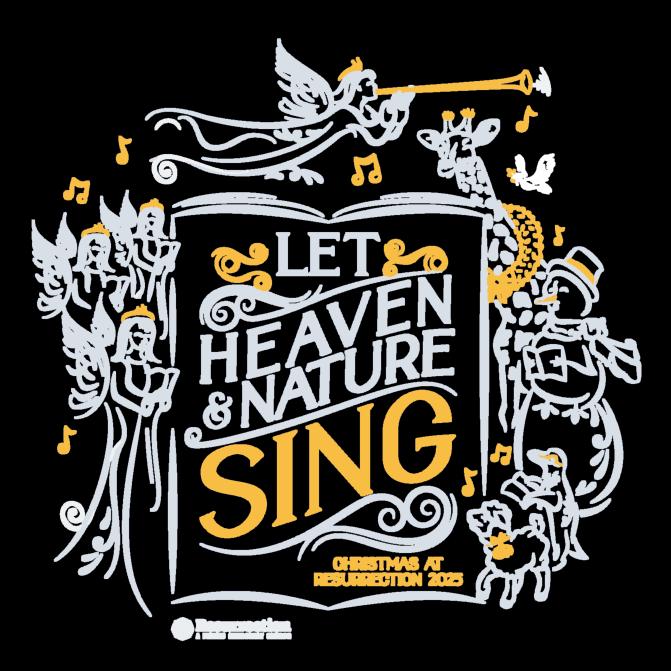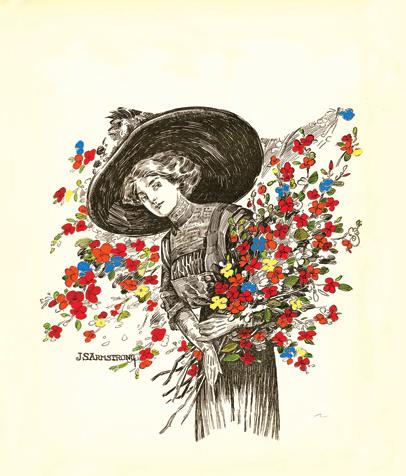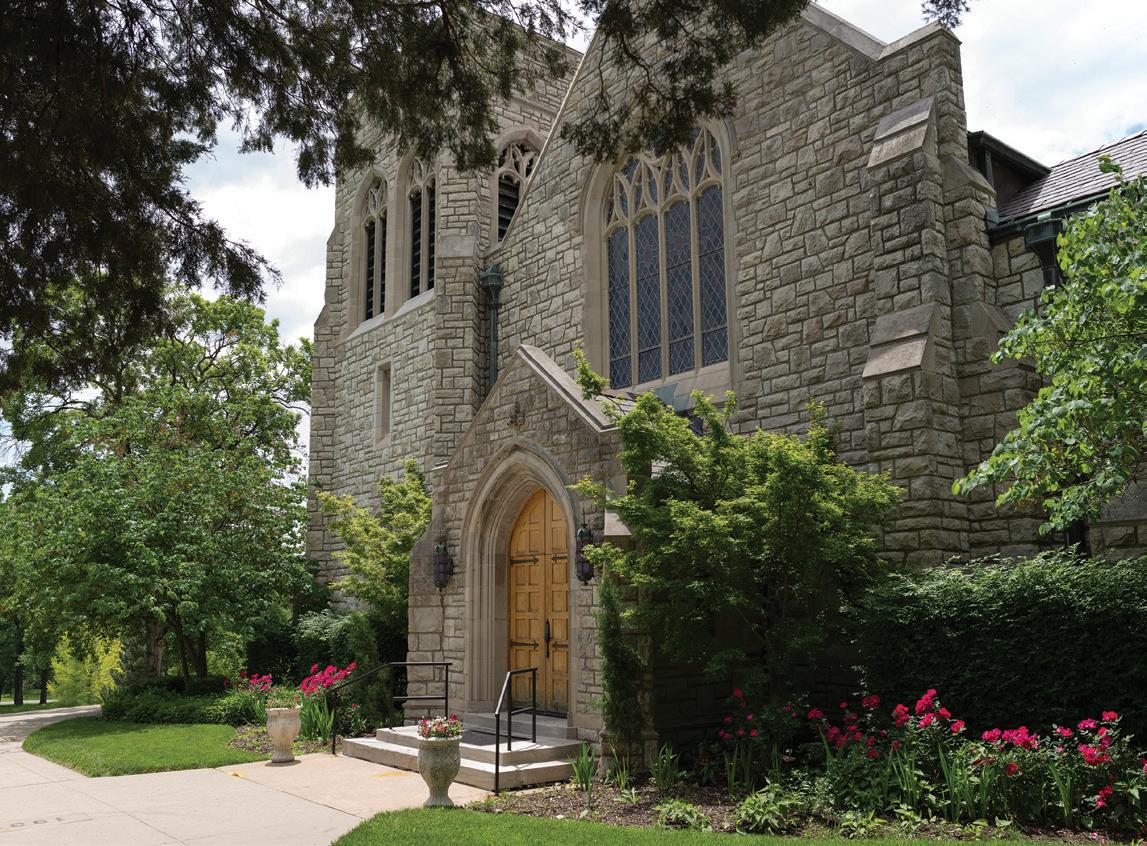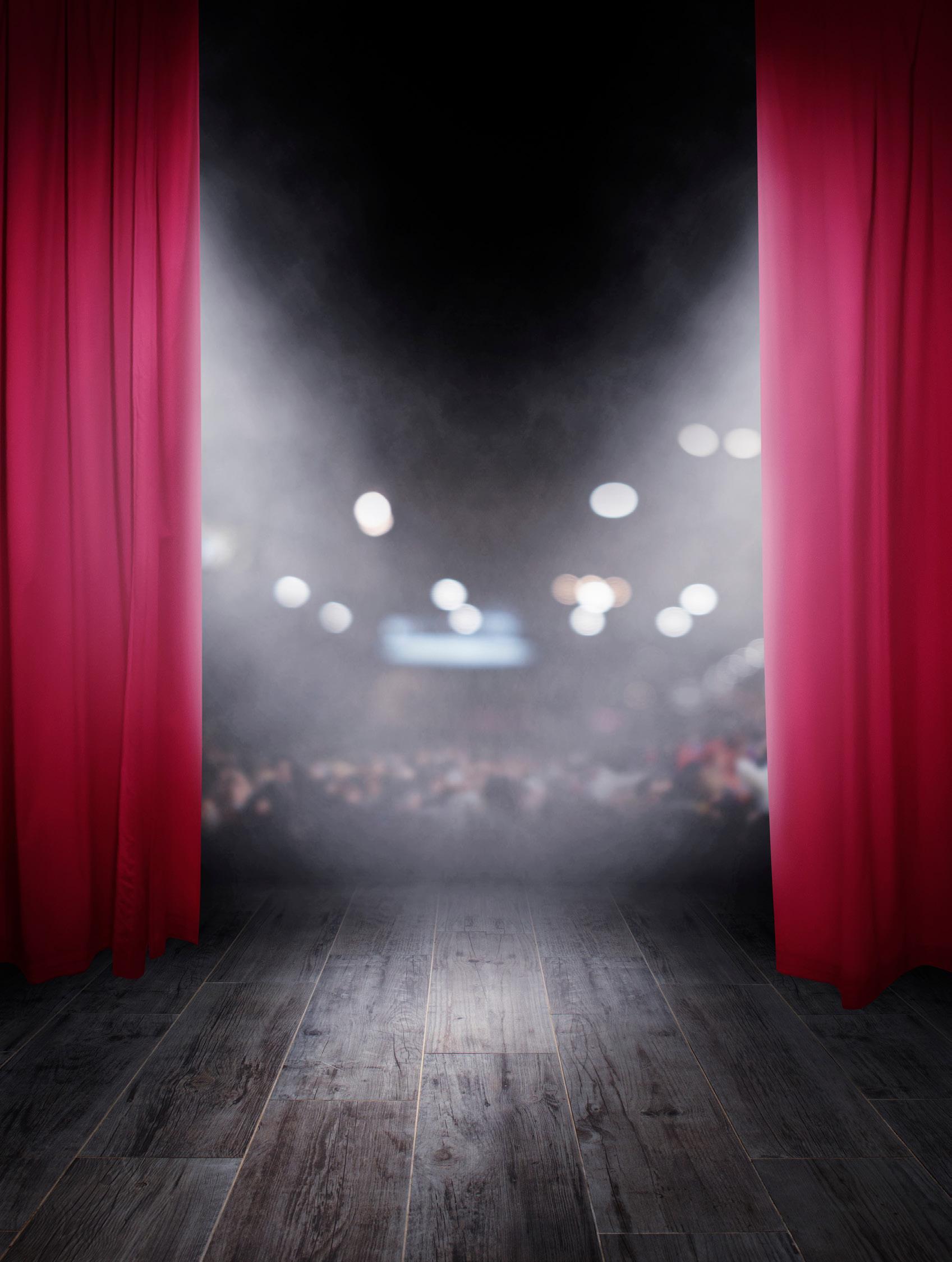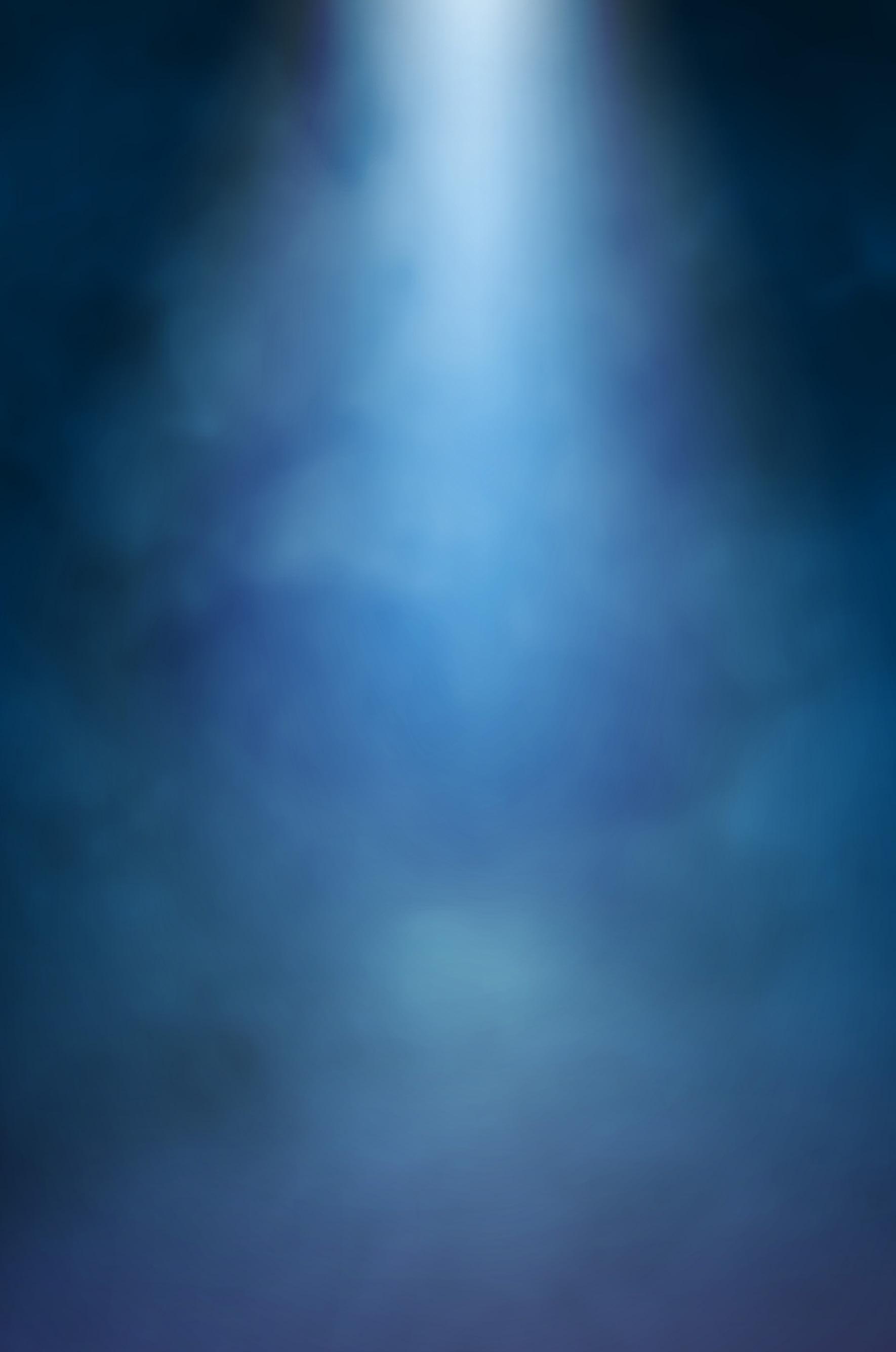Park University International Center for Music presents
SIDE-BY-SIDE CONCERT
ICM Faculty and Principal String
Members of the Kansas City Symphony
Thursday, October 23, 2025 • 7:30 p.m.
1900 Building • Mission Woods, Kan.


Mark Gibbs, Cello
Christine Grossman, Viola
Jun Iwaski, Violin
Lolita Lisovskaya-Sayevich, Piano
Richard Ryan, Double Bass
Daniel Veis, Cello
ICM CONCERT SEASON SPONSORS



Connect With Your Audience


WELCOME TO OUR 23RD SEASON!
Dear Esteemed Patrons and Lovers of Music,
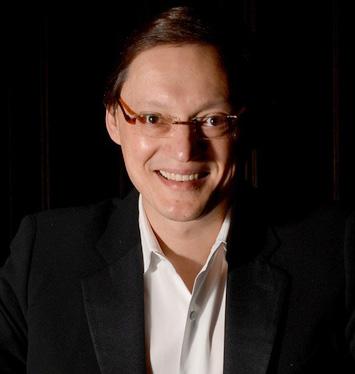
At Park University’s International Center for Music, our purpose is simple yet profound: to shape the future of classical music by nurturing extraordinary talent and sharing it with the world. Each season, our students — rising artists from across the globe — come to Kansas City to learn, perform and inspire. Their artistry enriches our community, connecting hearts through music and leaving a lasting impact far beyond the stage.
This season, we invite you to witness their brilliance alongside renowned guest artists and faculty who join us in advancing our mission. Every performance you attend supports not only world-class music, but also the dreams of the next generation of great musicians.
Thank you for believing in the transformative power of music and for being part of this remarkable journey with us.
With gratitude,

Stanislav Ioudenitch Founder and Artistic Director International Center for Music at Park University
PROGRAMME
ICM Faculty and Principal String Members of the Kansas City Symphony
PIANO TRIO NO. 1 IN D MINOR, OP. 49
I Molto allegro agitato
II Molto allegro agitato
III Scherzo. Leggiero e vivace
IV Finale. Allegro assai appassionato
Felix Mendelssohn (1809-47)
Jun Iwaski, Violin
Mark Gibbs, Cello
Lolita Lisovskaya-Sayevich, Piano
INTERMISSION
PIANO QUINTET IN A MAJOR, D. 667 (ALSO KNOWN AS THE TROUT QUINTET / FORELLENQUINTETT)
I Allegro vivace
II Andante
III Scherzo: Presto
IV Andantino – Allegretto
V Allegro giusto
Franz Schubert (1797–1828)
Jun Iwasaki, Violin
Christine Grossman, Viola
Daniel Veis, Cello
Richard Ryan, Double Bass
Lolita Lisovskaya-Sayevich, Piano
ABOUT TONIGHT’S ARTISTS
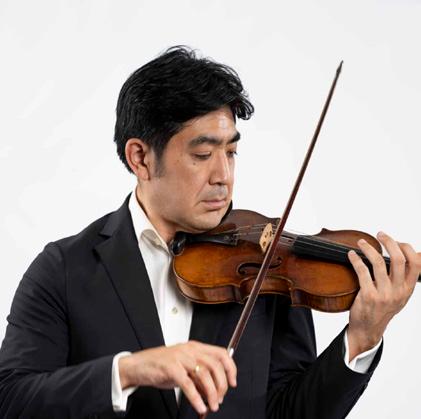
Jun Iwasaki, violin
Jun Iwasaki was appointed concertmaster of the Kansas City Symphony by Music Director Michael Stern and at the start of the 2022-23 season. A graduate of the Cleveland Institute of Music’s prestigious Concertmaster Academy, he has been hailed for his combination of dazzling technique and lyrical musicianship. In a review of Iwasaki’s performance at the Mimir Chamber Music Festival, the Fort Worth Star Telegram called him “the magician of the evening. He could reach into his violin and pull out bouquets of sound, then reach behind your ear and touch your soul.”
Prior to joining the Kansas City Symphony, Iwasaki served as concertmaster of the Nashville Symphony from 2011-22 and the Oregon Symphony from 2007-11. Throughout his career, Iwasaki has appeared with numerous other orchestras, including the Tokyo Symphony Orchestra, Oregon, Symphony, Columbia Symphony Orchestra, Blossom Festival Orchestra, Rome (Ga.) Philharmonic, New Bedford Symphony, Canton Symphony, Richardson Symphony, Cleveland Pops Orchestra, Plano Symphony Orchestra and the Huntsville Symphony. In addition, he has served as guest concertmaster of the Pittsburgh Symphony, Gulbenkian Orchestra (Portugal), São Paulo Symphony Orchestra (Brazil), Santa Barbara Symphony, National Arts Center Orchestra (Ottawa), and Canton (Ohio) Symphony Orchestra.
As chamber musician, Iwasaki has been a part of the Seattle Chamber Music Festival, La Jolla Summerfest, Chamber Music Northwest, Mainly Mozart, Chamber Music International and Mimir Chamber Music Festival.
In addition to teaching at Vanderbilt University’s Blair School of Music, Iwasaki also served as the artistic director of Portland Summer
Ensembles in Portland, Ore., a workshop for young musicians focusing on chamber music.
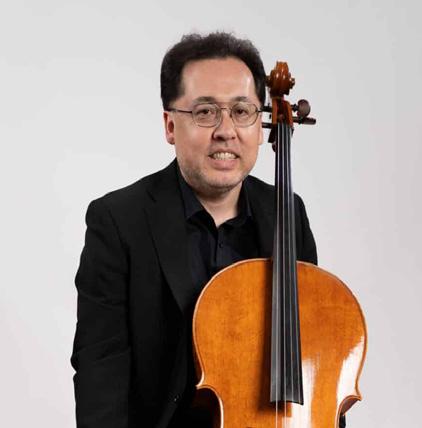
Mark Gibbs, cello
Praised by the Kansas City Star for his “sweet, sensuous tone and sophisticated feel for long-breathed lines,” Principal Cellist Mark Tsuyoshi Gibbs holds the Robert A. Kipp Chair in the Kansas City Symphony.
Prior to this appointment, Gibbs earned both his bachelor’s and master’s degrees from Northwestern University, where he was a student of Hans Jørgen Jensen. While at Northwestern, Gibbs was named principal cellist of the Northwestern University Symphony Orchestra and the Civic Orchestra of Chicago.
Gibbs’ numerous awards include the Northwestern University Civic Scholar Fellowship, the Union League Civic and Arts Foundation Prize, winner of the Northwestern University Bienen School of Music Concerto Competition, first prize in the Music Teachers National Association Collegiate Artist National Competition, and grand prize in the American String Teachers Association National Solo Competition.
He has appeared many times as a soloist with the Kansas City Symphony, including twice on Classical Series opening weekend as well as on the Symphony’s 2015 all Saint-Saëns disc from Reference Recordings, which earned a “Gramophone” editor’s choice and a Grammy nomination. Of his 2023 performance(s) of Richard Strauss’ Don Quixote, celebrating Michael Stern’s final season with the KCS, the KC Independent declared that “Principal Cellist Mark Gibbs gave one of the richest, most heart-rending performances of this musical chronicle that I’ve ever heard.”
Gibbs plays on a beautiful modern cello, crafted by Eric Benning in 2008, and a gold-mounted Pierre Guillaume bow. He is proud to
be known as a “fine Kansan cellist” (Audiophilia.com) and resides in Overland Park with his wife, Kansas City Symphony Principal Second Violinist Tamamo Someya Gibbs, and their two daughters.
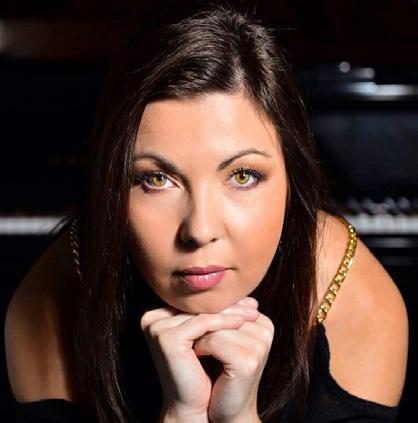
Lolita Lisovskaya-Sayevich, piano
Born into a Tashkent (Uzbekistan) musical family, Lolita Lisovskaya-Sayevich began studying piano at the age of 4. In 1985, she entered the Uspensky Central Music School in Tashkent. In 1993, she started attending a private school for young musicians in Moscow, and that same year received the first prize at the Chopin International Piano Competition in Göttingen, Germany. She entered the Tchaikovsky Special Music School in 1995, and two years later was accepted to the Tchaikovsky Moscow Conservatory under the tutelage of Vera Gornostaeva, with whom she continued postgraduate study from 2002 to 2004. Lisovskaya-Sayevich also studied with Stanislav Ioudenitch at Park University.
In 1996, Lisovskaya-Sayevich received the first prize from the Nikolai Rubinstein International Piano Competition, and in 2007 the first prize at the Iowa International Piano Competition. She was awarded scholarships from the Rostropovich Foundation, the Spivakov Foundation and the Nikolai Petrov Foundation. She has also earned the laureate designation from the international program “New Names,” and the festival “Virtuoso 2000” in St. Petersburg, Russia. Lisovskaya-Sayevich has recorded at the Hessen Radio Station in Frankfurt, Germany, and at Orfei Radio in Moscow.
Lisovskaya-Sayevich has presented numerous solo recitals and has played as a soloist with orchestras in Austria, France, Japan, Spain, Germany, Hungary, Italy and Russia. She has participated in many music festivals, including the Bashmet Festival in Tours, France, “Wave 2000” in Japan, International Musical Arts Institute in Maine (USA), Killington Music Festival in Vermont (USA), “Ars Longa” and “Primavera Classica” in Moscow. She collaborated with such
renowned musicians as Daniel Muller-Shott, Shmuel Ashkenazy, members of the Boston Symphony Orchestra and many others. She now performs extensively in chamber music ensembles.
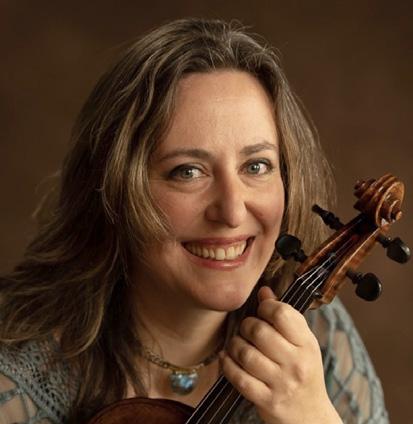
Christine Grossman, viola
Born to a musical family and raised in New York City, Christine Grossman began playing the violin at the age of 5, piano at the age of 10 and viola at 16. She received both a bachelor’s degree and a master’s degree in viola performance from the Juilliard School.
Before moving to Kansas City, Grossman previously held positions with the Pacific Symphony in Southern California, Delaware Symphony and the New World Symphony in Miami Beach, Fla. She has also performed as a substitute violist with the New York Philharmonic, Philadelphia Orchestra, Chicago Symphony Orchestra, Boston Symphony Orchestra and St. Louis Symphony Orchestra.
An avid chamber musician, Grossman was formerly in the California Quartet, based in San Diego. Notable performances and festival appearances include Portland (Maine) Chamber Music Festival, Laguna Beach (Calif.) Music Festival, Great Lakes Music Festival in Michigan, Festival Mozaic in California, Emerald City Music Festival in Washington, Breckenridge (Colo.) Music Festival, Colorado Music Festival, Hamptons Festival of Music in New York, Kingston (R.I.) Chamber Music Festival and Missouri River Festival of the Arts in Boonville, Mo.
Grossman served as principal violist with the Kansas City Symphony from 2008-19. She enjoyed several solo appearances with the orchestra, including Berlioz’ Harold in Italy, an arrangement of Queen’s “Bohemian Rhapsody” (featuring solo viola as Freddie Mercury) and Mozart’s Sinfonia Concertante with Concertmaster Noah Geller. Recent collaborations include a sold-out performance at Carnegie Hall with Ensemble Ibérica, as well as solo appearances with the Kansas City Chamber Orchestra and Kinnor Philharmonic.
Grossman was a viola professor in the International Center for Music at Park University from 2013-19, and restarted her position as faculty for Orchestra Repertoire / viola this season. She continues to teach violin and viola privately in Kansas City.
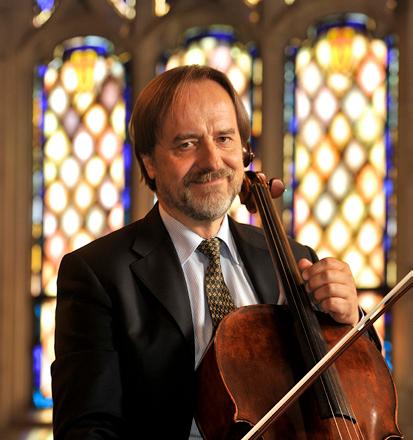
Daniel Veis, cello
Daniel Veis has been widely recognized as the finest Czech cellist since winning the silver medal at the prestigious 1978 Tchaikovsky International Competition, Moscow, and the first prize at the 1976 Prague Spring Medal at the prestigious 1978 Tchaikovsky International Competition,
He started his musical studies in his native Prague and proceeded to the Moscow Tchaikovsky Conservatoire furthering his studies with the famous Natalia Shakhovskaya, graduating with full distinction. Since 1979 he has performed regularly as a soloist with many major orchestras in such respected venues as Avery Fisher Hall and Carnegie Hall NY, Royal Albert Hall, Purcell Room, Wigmore Hall and Kings Place (London), Orchard Hall (Tokyo), Auditorí de Barcelona, Auditorio National de Madrid, Neues Gewandhaus Leipzig and Festsaal Dresden, and all major halls in Czechoslovakia including Rudolfinum and Smetana Hall in Prague.
He has worked with world famous conductors (V. Neumann, Sir Ch.Mackerras, S. Baudo, L. Pesek, J. Belohlavek, G. Deluge, O. Danon, Y.P. Tortelier, Ch. Seaman, J.P. Saraste) and outstanding musicians (J. Panenka, V. Snitil, L.Kavakos, A. Levine, K.W. Park, D. Poppen and P. Neubauer).
As a regular guest Veis has been invited to various international festivals (Prague Spring, Schumann- Zwickau, BodenseeFridrichshaven, Polenca -Mallorca, Canarias, Ex Toto Corte- Saõ Paolo, Victoria International Arts- Malta). His repertoire is vast and diverse and includes a large number of contemporary compositions, some of them dedicated to him.
For several years Veis held the position of guest soloist for the Czech Philharmonic Orchestra, and as a founding member of Dvořák Trio he has recorded with this group complete trios by Dvořák and Martinu as well as trios by Brahms, Smetana, Tchaikovsky and Suk.
As a sought after teacher he led the cello studio at the Prague Academy of Performing Arts where he also held the position of Head of Strings. During this period he brought up a number of excellent cellists who are now principals and members of major orchestra and chamber groups. In 2010 Veis was invited to lead the Cello Studio at the International Center for Music at Park University. He is a member of the Park Trio and a founding member of in London-based Rosamunde Trio. Veis regularly performs in the UK, Germany, Austria, France, Japan, Brazil, China and the U.S., and is frequently invited to judge international competitions. He plays a Jacobus Horil cello made in Rome 1750.
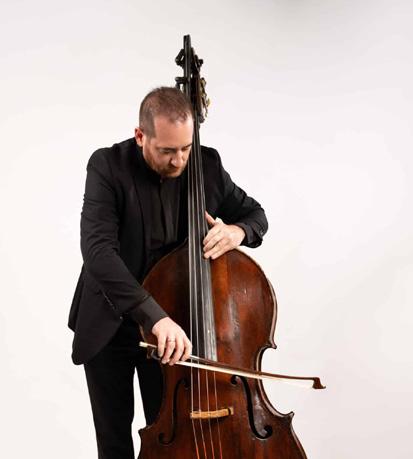
Richard Ryan, double bass
Richard Ryan grew up near Phoenix, Ariz., always dreaming of becoming a musician.
He received his bachelor’s degree in music performance from Indiana University and won his first professional orchestra position in the Louisville Orchestra at the age of 20. While in Louisville, Ryan was also a staff conductor for the Louisville Youth Orchestra and maintained a private bass studio.
Ryan joined the Kansas City Symphony in 2011. He has been the bass instructor at the University of Kansas since 2013, and has been the Music Director of the Lenexa Community Orchestra since 2017.
PROGRAM NOTES by Paul Horsley
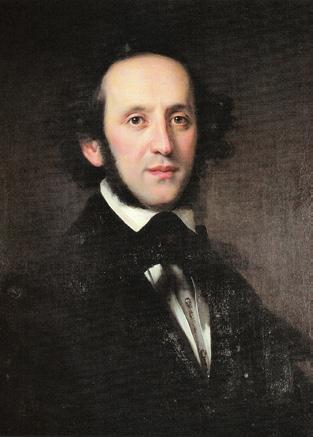
Felix Mendelssohn (1809-1847): Piano Trio No. 1 in D minor, Op. 49
At each stage of Mendelssohn’s career, chamber music played a small but vital role in his musical development. His first masterpiece in any genre was the Octet for Strings of 1825, written when he was all of 16; the richly Beethovenian A-minor String Quartet, Op. 13, followed shortly thereafter. The 1830s saw the appearance of the Op. 44 String Quartets and the First Cello Sonata (1837-1838).
During a few weeks in the summer of1839 he composed the D-minor Piano Trio—one of the towering achievements of 19th-century chamber music. His final years, plagued by ill health, saw the production of chamber works marked by dark hues and unconventional approaches to form: the Piano Trio No. 2, the Sixth Quartet, and the String Quintet No. 2 in B-flat major, Op. 87.
As a respite from four intensive years as conductor of Leipzig’s renowned Gewandhaus Orchestra, Mendelssohn welcomed the chance to spend the spring and summer of 1839 in Frankfurt. Life was good for the family: Felix composed prodigiously and was widely feted, and his wife, Cécile, was expecting the couple’s second child. In June and July the composer drafted the Trio that would become Op. 49; he revised it that fall and it was published in January 1840.
The premiere took place on February 1 at the Gewandhaus, with violinist Ferdinand David, cellist Franz Karl Witmann, and the composer at the keyboard. No less a critic than Johannes Brahms declared the piece “the master trio of the present day, just as those of Beethoven in B-flat major [the Archduke] and D major [the Ghost] and that of Franz Schubert in E-flat [D. 929] were the masterpieces of their day; it is an exceedingly fine composition that will delight our grandchildren and great-grandchildren for many years to come.”
PROGRAM NOTES (CONT.)
The D-minor Trio was one of the few compositions of Mendelssohn’s maturity that he actually altered, as a response to constructive criticism offered by his friend and fellow composer, Ferdinand Hiller. “Certain pianoforte passages in it, constructed on broken chords, seemed to me somewhat old-fashioned,” Hiller wrote. “I had lived many years in Paris, seeing Liszt frequently and Chopin every day, so that I was thoroughly familiar with the richness of passagework that characterized the new pianoforte school.”
Mendelssohn initially resisted the idea, but Hiller continued: “An unusual form of arpeggio may not improve the harmony, but neither does it spoil it,” he claims to have told Mendelssohn, “and it becomes more interesting to the player.” In the end Mendelssohn reshaped the busy arpeggios of the two outer movements in a variety of ways—making them more complex and less conventional. Like many of the composers of the 18th and 19th centuries, Mendelssohn was a composer-pianist, and his music with keyboard tells us something about his own pianism. Both his concertos and his solo piano works manifest a unique virtuosity that is at once angular and fluid—and which is dominated throughout by an almost unprecedented sense of lyricism and balanced melodic design.
The opening Molto allegro ed agitato introduces the strikingly memorable first theme in the cello—a subject that, together with its resolute continuation, will become the building-blocks for a movement of great wonderment. The pianist is given a workout of cascading passagework that nearly transcends the boundaries of chamber music. The brilliant, unusually extensive coda brings the movement to an edge-of-the-seat conclusion. A sweet lyricism pervades the Andante con moto tranquillo, filled with the grace and charm we know from the composer’s own Songs without Words for keyboard. The sparkling scherzo (Leggiero e vivace) is imbued with Mendelssohn’s best comedic vein, with hints of the whimsy of the early music for A Midsummer Night’s Dream.
PROGRAM NOTES (CONT.)
The finale (Allegro assai appassionato) is a dance-like movement of brightly propulsive energy, but it is cast in a complex structure that balances, almost subliminally, the weight of the first movement. (They are of equal length, about 10 minutes each.) Here Hiller’s advice was taken fully to heart, transforming this finale to a virtuosic tour de force—with its continual surge of arpeggios and driving octaves. The mirthful spirit culminates in a joyous shift to D major for the close.
Franz Schubert (1797-1828): Quintet in A major, D. 667, for piano, violin, viola, cello, and double bass (“Trout”)
The summer of 1819, which Schubert spent in the small Austrian town of Steyr 90 miles west of Vienna, must count among the most idyllic periods of the composer’s life. Invited there by his friend Michael Vogl, the famous Viennese baritone who had been born in the village, the 22-year-old composer found himself profoundly inspired by the region’s “indescribable beauty,” as he characterized it. Among the works he sketched out that summer was the quintet we know as the “Trout,” the fourth movement of which was a set of variations on a song of 1817 that Vogl himself had often sung in Viennese drawing-rooms.
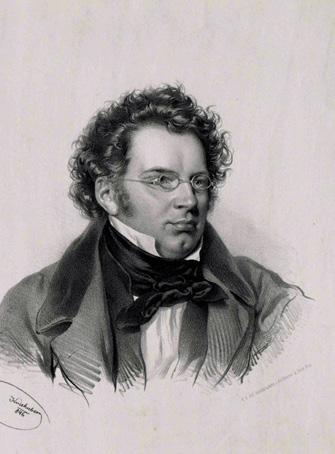
One of the musical connoisseurs who had no doubt heard Vogl perform this song (“Die Forelle”) was Sylvester Paumgartner, a Viennese patron of the arts who was famous for his house-concerts. According to Schubert lore, it was Paumgartner who asked the composer to fashion a quintet after a work by Johann Nepomuk Hummel (Op. 87), written in 1802 for the same instrumental combination. The inclusion of the “Trout” tune was Schubert’s idea, however. He must have known of the special significance it would have for the insiders of Paumgartner’s circles—many of whom doubtless associated the song with Vogl and with the Liederabend concerts).
PROGRAM NOTES (CONT.)
The composer dedicated the quintet to Paumgartner, to whom he sent the parts late in 1819; Schubert was never to hear of the work again. Within months of its posthumous publication by Josef Czerny in 1829 (as Op. 114)—less than a year after the death of its creator—the Quintet quickly became a favorite among Vienna’s musical cognoscenti
This was not the only work in which Schubert used one of his songs for a set of variations. His “Trockne Blumen” from Die schöne Müllerin became the Introduction and Variations for Flute and Piano (D. 802); “Der Wanderer” was used for the cyclic Wanderer Fantasy for piano; the 1817 song “Death and the Maiden” would later form the second movement of the celebrated D-minor String Quartet that bears its title; and the song “Sei dir gegrüsst” was used for variations in the Fantasie in C Major for Violin and Piano, D. 934. Less well known is the use of the initial motif from “Der Doppelgänger” for the “Agnus Dei” of the Sixth Mass from 1828, and there are many other examples. This is hardly surprising for a composer who considered song central to his output, indeed to his very identity—and whose more than 600 Lieder constitute perhaps the greatest body of song known to have been produced by a single person.
The “Trout” Quintet was also not the only Schubert work whose basic instrumental format is modeled after another composer’s piece: The Octet in F major for winds and strings (1824), for example, was fashioned with an eye on Beethoven’s similarly formatted Septet, Op. 20.
Nevertheless the “Trout”—sun-flecked and filled with the bubbling enthusiasm of a Central European summer—forms a cornerstone of the chamber repertory. It is unusual not only because of its instrumentation, but also because of the use of a five-movement design in a piece that is plainly for serious concert use (and far from a small-scale “divertimento” that would normally have dictated such a structure).
The opening Allegro vivace is a big, imposing sonata form whose seriousness of intent never stifles its cheerful nonchalance. The piano, which plays a central role throughout, has a preponderance of melodic
octaves in the upper register—as a counterpoise, perhaps, to the lower extremes explored by the double bass. The carefree and tuneful Andante consists of two equal parts, each with three lyrical themes. The Scherzo (Presto) belongs to the raucous and thematically ingenious type found in several of Schubert’s mature works; its trio is built from a melodic fragment from the scherzo.
The famous “Trout” movement, Tema (Andantino) con variazioni, begins with the strings’ simple statement of the song tune; five variations ensue and the movement concludes with a restatement of the theme by violin and cello—this time with the song’s characteristic ascending sextupletfigure in the piano. A racing and witty finale (Allegro giusto) offers a satisfying conclusion.
Park International Center for Music
FACULTY & STAFF
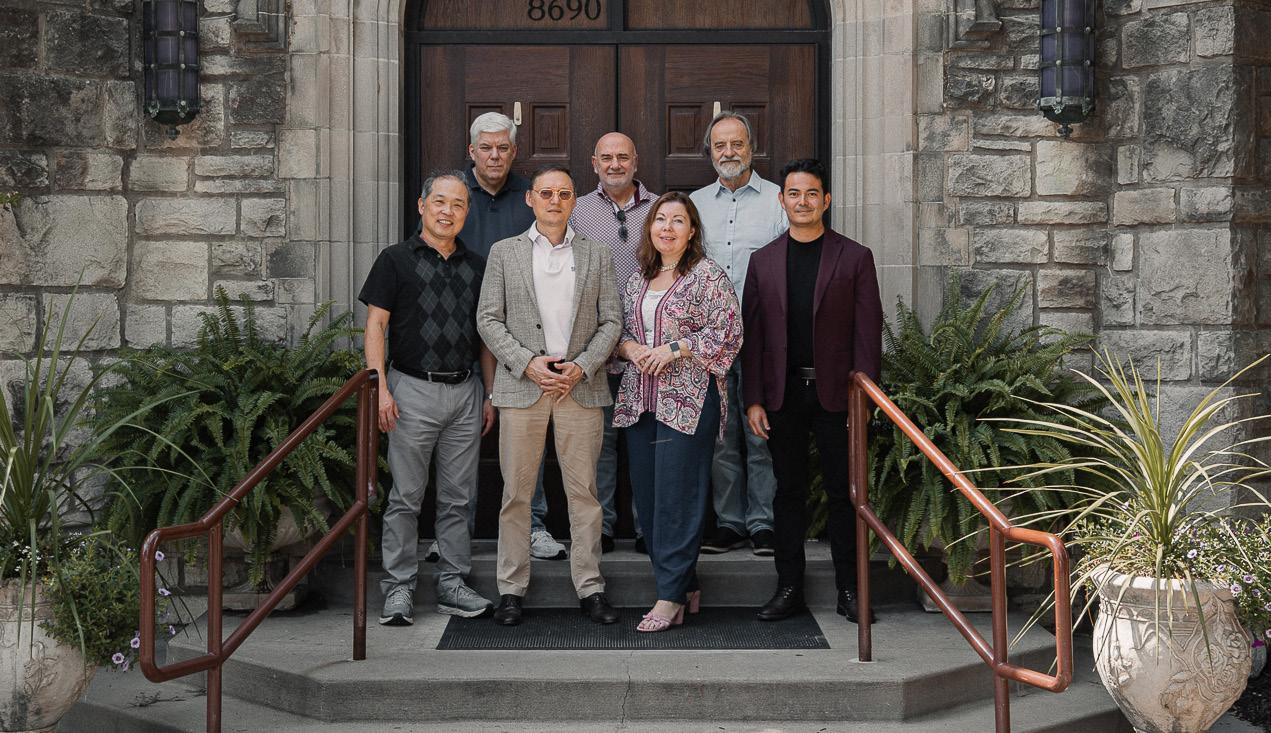
Stanislav Ioudenitch Founder & Artistic Director
Piano Studio
Behzod Abduraimov
Artist-in-Residence
Gustavo Fernandez Agreda
ICM Coordinator
Peter Chun, Viola Studio
Lolita Lisovskaya-Sayevich Director of Collaborative Piano
Steven McDonald Director of Orchestra
Ben Sayevich
Violin Studio
Daniel Veis
Cello Studio
Shmuel Ashkenasi
Distinguish Visiting Artist, violin
Christine Grossman Orchestral Repertoire, viola
Park International Center for Music
PATRONS SOCIETY MEMBERS
The Patrons Society makes it possible for Park International Center for Music students to pursue their dreams of professional careers on the concert stage.
Our Patrons provide essential support for scholarships, faculty, and performance opportunities, ensuring world-class music thrives in Kansas City and beyond.
We are deeply grateful for the generosity of each member listed below.
SUPERLATIVE
Richard J. Stern Foundation for the Arts - Commerce Bank, Trustee *
Ronald and Phyllis Nolan *
Jerry M. White and Cyprienne Simchowitz
EXCEPTIONAL
Brad and Marilyn Brewster *
SUPREME
Commerce Bank *
Brad and Theresa Freilich
Barnett and Shirley Helzberg
Benny and Edith Lee *
John and Debra Starr *
EXTRAORDINAIRE
Joe and Jeanne Brandmeyer *
Thomas and Mary Bet Brown *
Vincent and Julie Clark *
Stanley Fisher and Rita Zhorov *
Stephen L. Melton *
Mira Mdivani/Mdivani Corporate
Immigration Law Firm *
Susan Morgenthaler
Rob and Joelle Smith
Nicole and Myron Wang *
PATRON
Andrew and Peggy Beal *
Lisa Browar *
Rich Coble and Annette Luyben *
Paul S. Fingersh and Brenda Althouse *
Patty Garney *
David and Lorelei Gibson *
Ihab and Colleen Hassan *
Ms. Lisa Merrill Hickok
Robert E. Hoskins, ‘74
John and Jacqueline Middelkamp *
Patrick and Teresa Morrison *
Holly Nielsen *
Charles and Susan Porter *
James and Laurie Rote *
John and Angela Walker *
Barbara and Phil Wassmer *
Joyce Weiblen *
John and Karen Yungmeyer *
* 2025-26 Member
We gratefully acknowledge these donors as of September 8, 2025.
JOIN THE PATRONS SOCIETY!
Your gift brings world-class music to life.
Your gift makes an impact by:
Supporting scholarships that bing gifted students from around the world to Kansas City
Sustaining performances that connect our community to international artistry
Advancing communication and outreach that inspires the next generation of musicians
Ways to support Park ICM:
Annual Gifts - Every contribution, no matter the size, fuels our students’ success
Patrons Society - join with a commitment of $1,000 or more annually and enjoy the unique opportunities to connect more deeply with Park ICM
Sponsorships - support a concert, artist or special event and receive recognition for your leadership.
Planned Giving - leave a legacy through bequests, estate plans or endowed funds
Together our donations sustain Park ICM’s mission and ensure that the music continues for generations
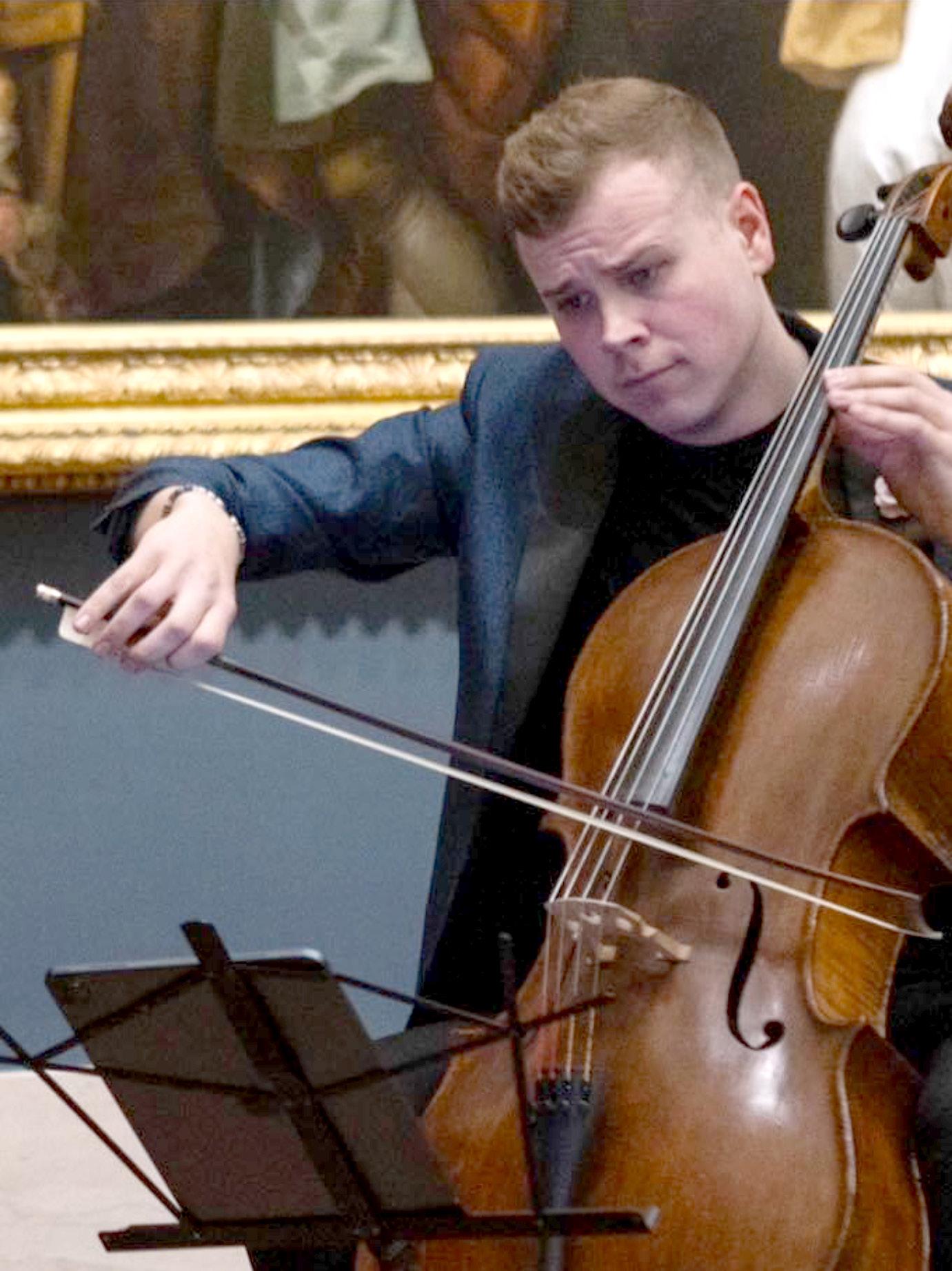

Park University International Center for Music
A Night for Piano Lovers
An entire evening devoted to piano lovers, this amazing concert will feature students of Van Cliburn gold medalist Stanislav Ioudenitch. “It is extremely important for students to have performance opportunities,” said Ioudenitch. “Musicians need to have the practical training of performing. That’s what we’re trained to do, to perform in public. These young artists in my piano studio are already successful musicians. They are award-winning instrumentalists, so something not to miss.”
Stanislav Ioudenitch
Piano Studio Recital
November 13,2025
7:30 p.m.
1900 Building

Get tickets today!
General Admission $30. Students $10 with I.D.




